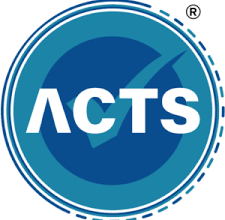If you’ve been around the trading world for even a minute, you’ve probably heard of prop firms—those mysterious places where talented traders can get access to big capital without risking their own money. And if you’re into futures trading then you might be wondering: how do I get my foot in the door at one of these firms?
Landing a gig at a prop firm as a futures trader isn’t some pipe dream. But make no mistake, it’s not just a matter of sending in a résumé and hoping for the best either. There’s a process and it’s pretty specific. So let’s see the full application process for futures traders at prop firms from first click to final offer.
Why Futures?
Futures are quick, liquid, and heavily leveraged. Perfect storm for traders who know what they’re doing. They provide a level of opportunity and risk that’s kind of unmatched in other asset classes. Prop firms love that. It means potential for high returns without the need to tie up tons of capital.
Plus, the CME and other futures exchanges are super transparent. That kind of environment is easier to monitor for risk which is a big deal when a firm is trusting you with their money.
So futures trading is hard. And if you’ve got the skills then there’s a good chance a futures trading prop firm wants to hear from you.
Step 1: Finding the Right Firm
The first step is pretty straightforward: you need to find a prop firm that actually supports futures traders.
Not every firm does. Some are all about forex or stocks. Others provide futures but only on a limited basis. So, do your homework. Look for firms that are:
- Actively recruiting futures traders
- Transparent about their rules, fees, and payout structures
- Offering either remote or in-office opportunities (depending on what you’re looking for)
Some well-known firms provide futures trading opportunities. Each has its own style, rules, and trader profile they’re looking for.
Make a short list of a few that vibe with your goals and trading style.
Step 2: Understanding Their Evaluation Process
No legit prop firm is going to just hand you a big pile of cash and say go nuts. You’ve gotta prove you can trade first.
Most firms have some sort of evaluation or challenge phase and the structure depends on the firm.
Evaluation Account (AKA: The Trading Combine, Challenge, or Audition)
You’ll be given a simulated account with a set amount of capital like $50K, $100K, or even $250K. You’re expected to trade futures like E-mini S&P futures, crude oil, treasuries, etc. according to their risk parameters.
Here’s what you’re usually being judged on:
- Profit Targets: Can you hit a specific profit goal like $3,000 within a set number of trading days?
- Drawdown Limits: Most firms have a daily and overall drawdown limit. Go below it and you’re out.
- Consistency: Are you steadily profitable or are you just yoloing one giant trade to pass the challenge?
- Risk Management: Do you follow stop-loss rules? Position sizing? Are you treating their simulated capital like it’s real?
These challenges can last anywhere from a week to a month and they’re usually not free—expect to pay a monthly fee while you’re in the challenge. Consider it a small investment in your future if you’re serious.
Step 3: Passing the Challenge
You’ve taken the plunge and signed up for a trading challenge. Now what? This is the part where you gotta back up all that talk with action. A few pro tips if you want to make it through:
- Stick to a Strategy You Know: Now’s not the time to start experimenting. Use a strategy you’ve already tested—one you know works for you.
- Track Your Metrics: Keep a log of your trades. Know your win rate, risk/reward, average hold time, etc. It’ll help you adjust on the fly if needed.
- Trade Like It’s Real Money: If you treat it like a video game, you’ll blow up. Simple as that.
- Stay Within the Rules: This can’t be overstated. Even if you make your profit target, breaking a rule like holding trades over news events or exceeding daily loss limits can disqualify you.
Step 4: Verification (Sometimes Optional)
Some firms want a little more proof before funding you for real. That’s where verification is used.
It’s basically a second round with the same rules but maybe lower targets or more days required. They want to make sure your win wasn’t a fluke and that you’re consistent.
Not every firm does this step. Some will find you right after the initial challenge. But if it’s required then just treat it the same way—don’t get overconfident and blow it.
Step 5: Getting Funded
This is the part everybody wants—the funded account.
Here’s what that usually means:
- You get a real account (or a live-sim that mimics real markets and payouts)
- The firm gives you a cut of the profits (often 80% or more)
- You agree to keep following their risk rules
- If you blow up the account, you’re either reset, paused, or dropped
Keep in mind, the account you get isn’t always the full size. Some firms give you a scaling plan—you start with a lower drawdown and position size and graduate to bigger allocations based on performance.




